The old saying, “Many hands make light work” proved to be true for Drumlin Farm’s Tales of the Night. From set-up to breakdown, 140 volunteers gave 519 hours of their time, contributing greatly to the success of this Halloween-themed event, which took place last Thursday and Friday. Every volunteer played an important role in the evening festivities, and more than 1600 visitors enjoyed the benefits of their generosity.
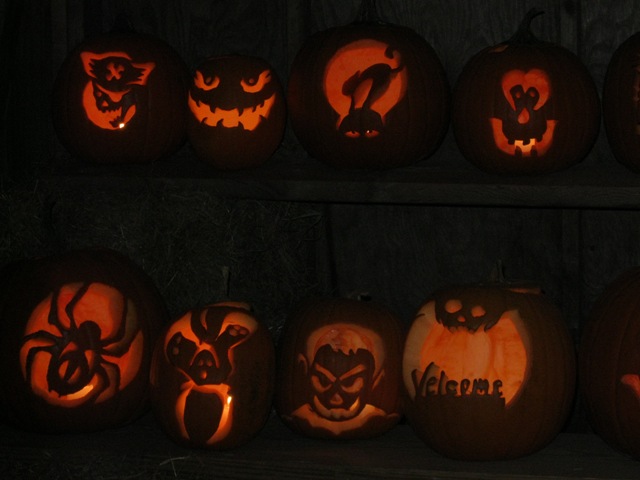 On Wednesday, corporate volunteers from CA Technologies, Dassault Systems, Meketa Investment Group and Intel Corporation donated their creativity and elbow grease. Volunteers carved pumpkins to contribute to our display of 150 jack-o-lanterns. They created a spooky graveyard, stretched spider webs across fences, dug fire pits to light the way for the Haunted Hayride, and assembled some of the friendliest scarecrows around. Decorating the farm is a large endeavor, and we were so grateful to have had our corporate volunteers to help. Several families contributed pumpkins to our jack’o-lantern display as well.
On Wednesday, corporate volunteers from CA Technologies, Dassault Systems, Meketa Investment Group and Intel Corporation donated their creativity and elbow grease. Volunteers carved pumpkins to contribute to our display of 150 jack-o-lanterns. They created a spooky graveyard, stretched spider webs across fences, dug fire pits to light the way for the Haunted Hayride, and assembled some of the friendliest scarecrows around. Decorating the farm is a large endeavor, and we were so grateful to have had our corporate volunteers to help. Several families contributed pumpkins to our jack’o-lantern display as well.
 It takes a platoon of volunteers to run Tales of the Night smoothly and ensure that our visitors have a spook-tacular evening. Luckily for the Drumlin Farm staff, we had many individuals willing to act as zombies, witches and ghouls on the Haunted Hayride. Others entertained young children and the fainter of heart on the Nursery Rhyme Trail, where Mother Goose tells stories and Little Miss Muffet fends off the giant spider. At the face painting station, volunteers drew designs on countless children’s cheeks. And we couldn’t forget the good-natured volunteers who served refreshments, assisted at the admission window and directed parking.
It takes a platoon of volunteers to run Tales of the Night smoothly and ensure that our visitors have a spook-tacular evening. Luckily for the Drumlin Farm staff, we had many individuals willing to act as zombies, witches and ghouls on the Haunted Hayride. Others entertained young children and the fainter of heart on the Nursery Rhyme Trail, where Mother Goose tells stories and Little Miss Muffet fends off the giant spider. At the face painting station, volunteers drew designs on countless children’s cheeks. And we couldn’t forget the good-natured volunteers who served refreshments, assisted at the admission window and directed parking.
 Please accept a heart-felt thank you to all our volunteers from the Drumlin Farm staff. We could not have done it without you!
Please accept a heart-felt thank you to all our volunteers from the Drumlin Farm staff. We could not have done it without you!
Author Archives: Mass Audubon
Wildlife in Cold Blood
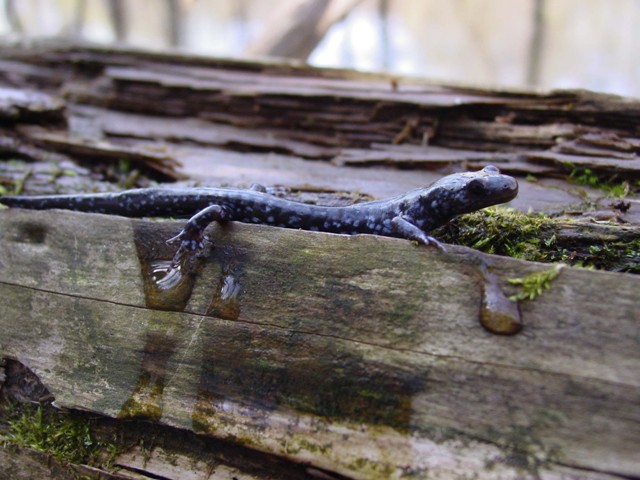 Drumlin Farm is home to many species of amphibians and reptiles. Ice Pond is a great place to spot many spring peepers, American toads, and painted turtles. Garter snakes are common, and the occasional milk snake will appear, too. Rotting logs along the trails provide habitat for amphibians, including this blue spotted salamander.
Drumlin Farm is home to many species of amphibians and reptiles. Ice Pond is a great place to spot many spring peepers, American toads, and painted turtles. Garter snakes are common, and the occasional milk snake will appear, too. Rotting logs along the trails provide habitat for amphibians, including this blue spotted salamander.
Other reptiles and amphibians at Drumlin Farm have a home at our Wildlife Care Center. The Wildlife Care Center is home for native animals that accompany teacher naturalists to school and group programs and other educational events. Our collection includes a variety of frogs, toads, turtles, but we would like to give you a virtual introduction to just a few representatives.
 American Toad: American toads have a brown shade of skin with dark spots on their backs. Each spot contains only one or two warts, a distinguishing feature from other toads, and may be circled with a white or yellow ring. Like other toads, American toads have poisonous glands behind the head that are toxic when ingested, provided defense against predators.
American Toad: American toads have a brown shade of skin with dark spots on their backs. Each spot contains only one or two warts, a distinguishing feature from other toads, and may be circled with a white or yellow ring. Like other toads, American toads have poisonous glands behind the head that are toxic when ingested, provided defense against predators.
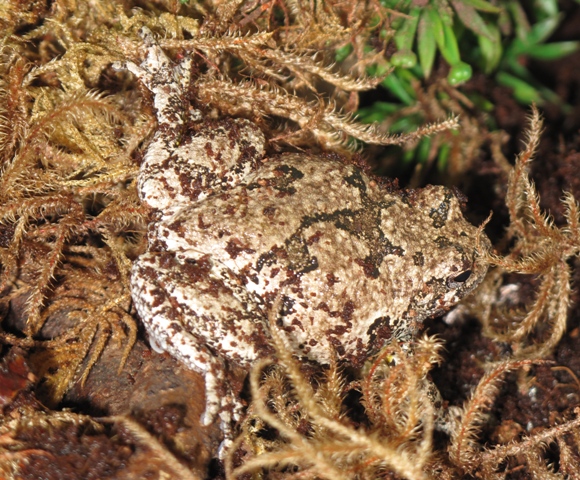 Gray Treefrog: Gray treefrogs are the only treefrog found in Massachusetts. Inhabiting in wooded areas near water sources, the frogs are often found on damp logs. Glycerol in the blood makes the gray treefrog the only Massachusets frog that can freeze — up to 80% of the body can freeze during winter hibernation. Gray treefrogs are often used by scientists as an indicator of chemical contaminants and the overall level of biodiversity in the environment.
Gray Treefrog: Gray treefrogs are the only treefrog found in Massachusetts. Inhabiting in wooded areas near water sources, the frogs are often found on damp logs. Glycerol in the blood makes the gray treefrog the only Massachusets frog that can freeze — up to 80% of the body can freeze during winter hibernation. Gray treefrogs are often used by scientists as an indicator of chemical contaminants and the overall level of biodiversity in the environment.
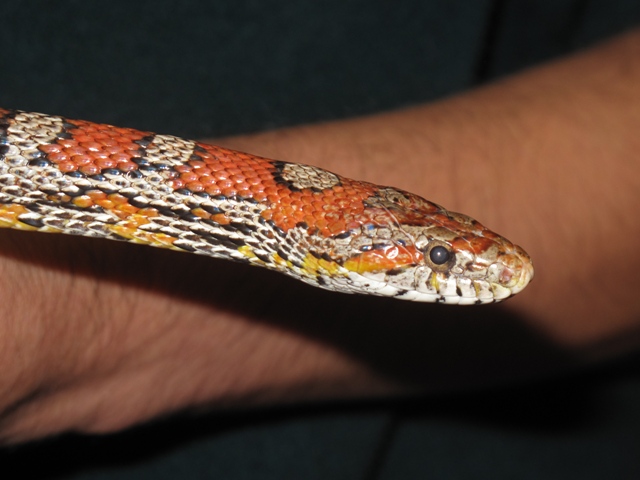 Corn snakes: Unlike the rest of the collection at Drumlin Farm, corn snakes are not native to Massachusetts. Our two corn snakes were former pets, and therefore cannot survive in the wild. Corn snakes are not venomous, and they are known to have a docile nature, which makes them a good choice for educational programs.
Corn snakes: Unlike the rest of the collection at Drumlin Farm, corn snakes are not native to Massachusetts. Our two corn snakes were former pets, and therefore cannot survive in the wild. Corn snakes are not venomous, and they are known to have a docile nature, which makes them a good choice for educational programs.
 Snapping Turtle: Snapping turtles have extremely long necks, which allow them to reach around half of the shells. Most turtles have robust shells to hide from predators, but the bottom piece (called a plastron) of a snapping turtle shell is small, and exposes much of the turtles flesh. This allows snapping turtles to be stronger, but makes them more accessible to predators. The wide range of motion in the neck and the powerful jaw helps the snapping turtle make-up for its smaller shell.
Snapping Turtle: Snapping turtles have extremely long necks, which allow them to reach around half of the shells. Most turtles have robust shells to hide from predators, but the bottom piece (called a plastron) of a snapping turtle shell is small, and exposes much of the turtles flesh. This allows snapping turtles to be stronger, but makes them more accessible to predators. The wide range of motion in the neck and the powerful jaw helps the snapping turtle make-up for its smaller shell.
For a chance to meet our slimy and scaly friends in person, join one of our teacher naturalists at Brush Gallery and Art Studio’s exhibition, In Cold Blood on November 23rd from 2-4 pm to help celebrate the diversity and beauty of reptiles, amphibians, and fish. The art exhibition, which runs from November 2 to December 7, 2013, highlights the important role of cold-blooded creatures in the ecosystem. We hope to see you there!
A Farm for All Seasons
Autumn of 2013 has certainly been kind. The weather is still beautiful, the vistas still vibrant, and apple and pumpkin flavors are abound. As October turns to November and the temperatures drop, many people get cozy by the fireplace to wait out the snow- but not Drumlin Farm! As a fully-operational working farm, Drumlin Farm has plenty going on year-round, and we are already looking ahead to everything winter has to offer. There are lots of things for our visitors to do, too!

Our farmers are already busy planting garlic for next season, and very soon they will cover garlic, strawberries, and other delicate plants with straw to protect them from the harsh snow. The root cellar is piling up with potatoes, squash, beets, and other vegetables for our Winter CSA. Visitors will see green vegetables in the Greenhouse, too – the perfect spot to warm up on a chilly day and see if you can identify the various kinds of vegetables growing.
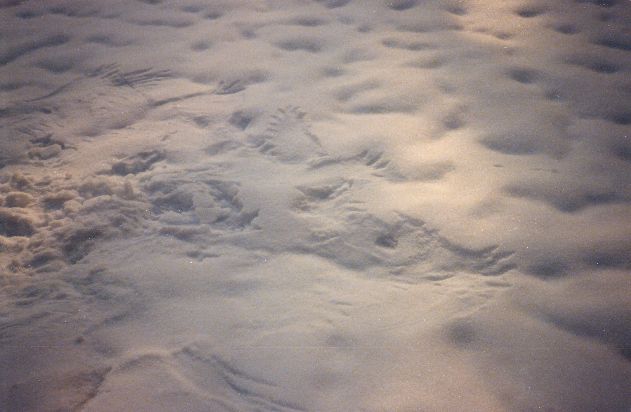
Winter is a good time for spotting wildlife on a nature hike. The bare trees make it harder for animals to hide, and a good snow cover will almost guarantee there will be animal tracks. Bring your field guides and find out what’s been wandering through the sanctuary or stop in the Visitor Nature Nook to watch a quick video of animals we’ve caught exploring the farm.
 How do animals find food in the winter time? What animals hibernate until spring? Check out one of the many programs lined up for the season to help you explore Drumlin Farm this winter. Of course, visitors can always come to see our farm animals – will they be cuddled in the barns, a warm retreat from the cold air, or basking in the sun?
How do animals find food in the winter time? What animals hibernate until spring? Check out one of the many programs lined up for the season to help you explore Drumlin Farm this winter. Of course, visitors can always come to see our farm animals – will they be cuddled in the barns, a warm retreat from the cold air, or basking in the sun?

February is the perfect time to tap maple trees for sap and begin the sugaring process. Visitors will see sap buckets on trees across the drumlin, and can join us for programs to see the sugaring process up close. You may even have a chance to try a piece of maple candy!
So as you bundle up and hunker down, just remember that Drumlin Farm is still here to satisfy your nature cravings.
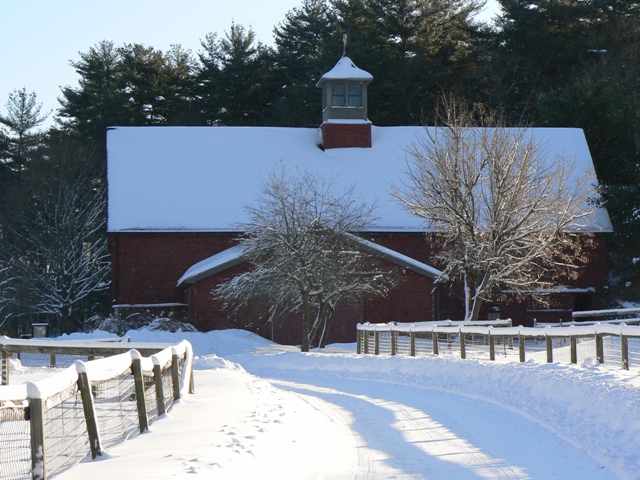
Foliage on the Farm
Mid-October is the perfect opportunity to feature Drumlin Farm photos at one of the most vibrant times of the year. In addition to the peaking foliage, the farm is bursting with color from the lingering harvest vegetables, like beets, radishes, squash and pumpkins. Enjoy these snapshots of autumn Drumlin Farm, and be sure to come by to see for yourself before all the leaves disappear!
The farmstand features a delicious selection of fall squash, from old favorites like butternut squash to less familiar varieties, like delicata squash (the green striped one).
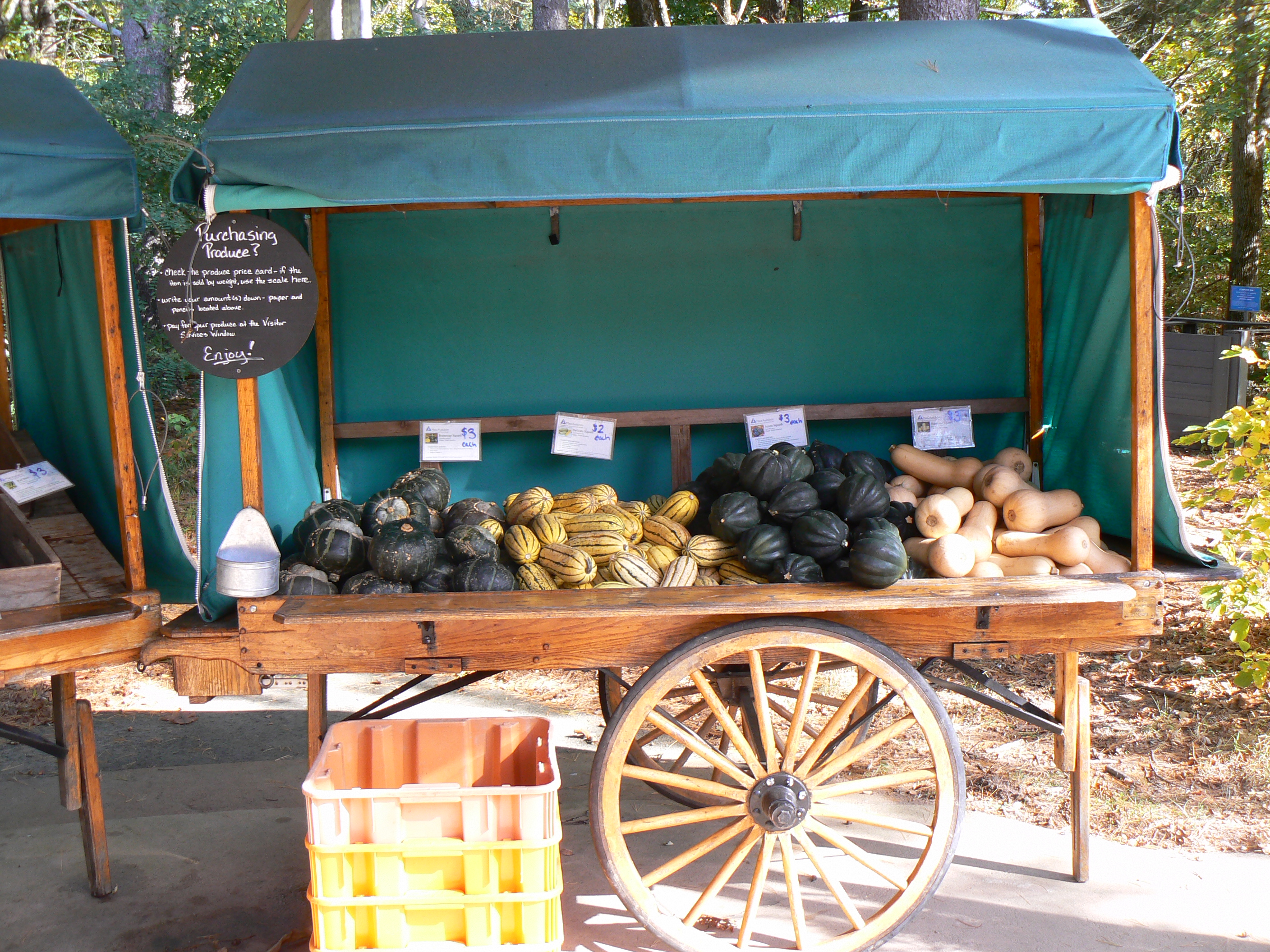
Plenty of leaves are still light up the trees, but there is ample opportunity to make piles of crisp fallen leaves, too.
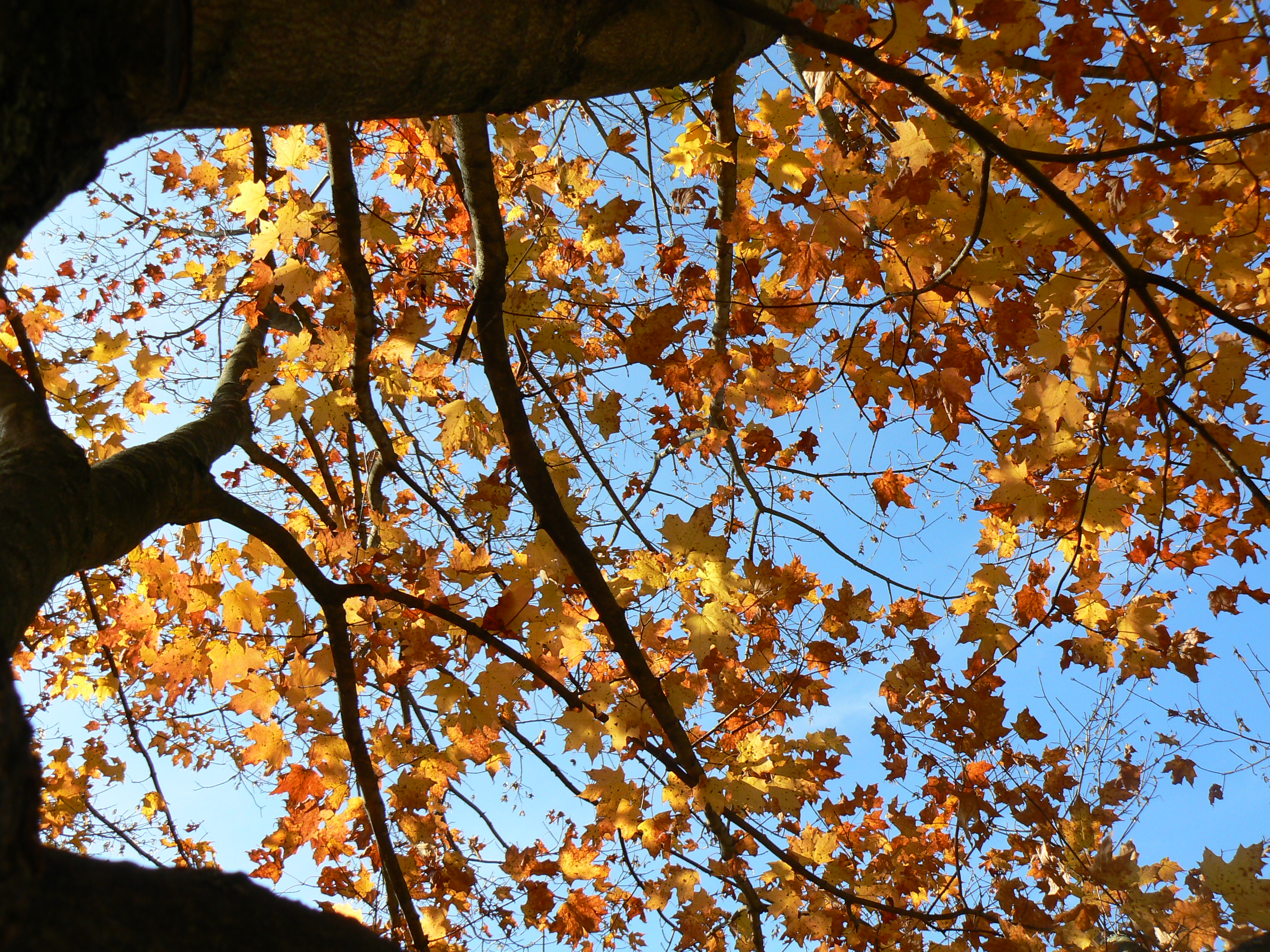
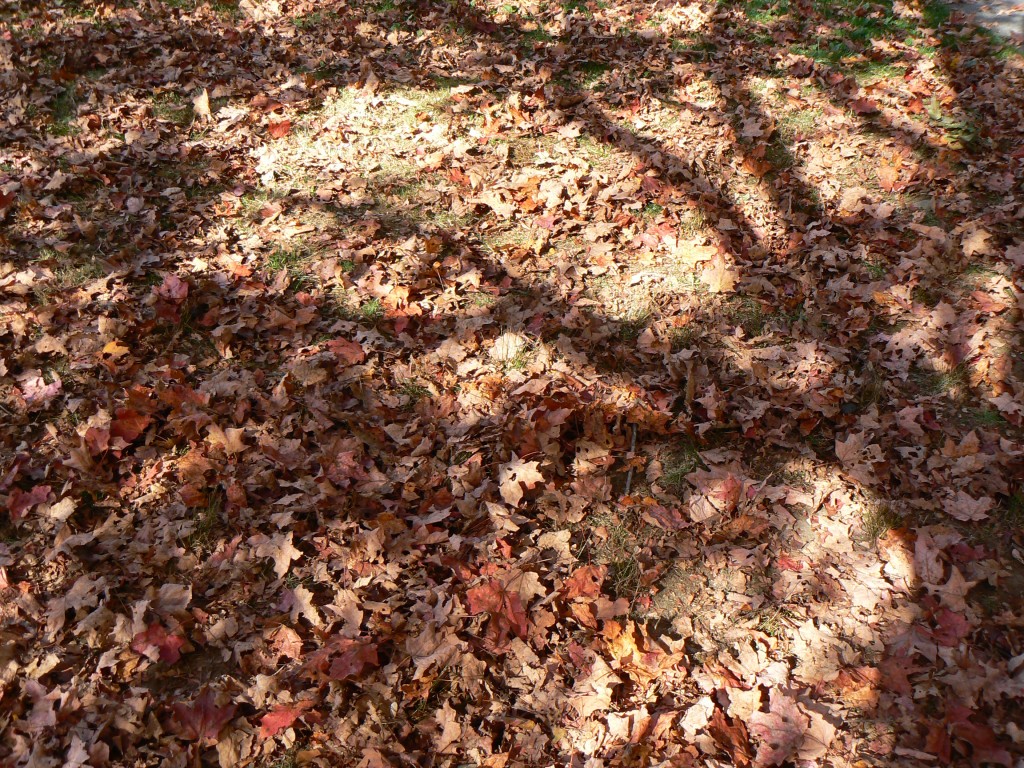
There are a few wild blooms left on the trails, while the garden beds are clearing out for next year.
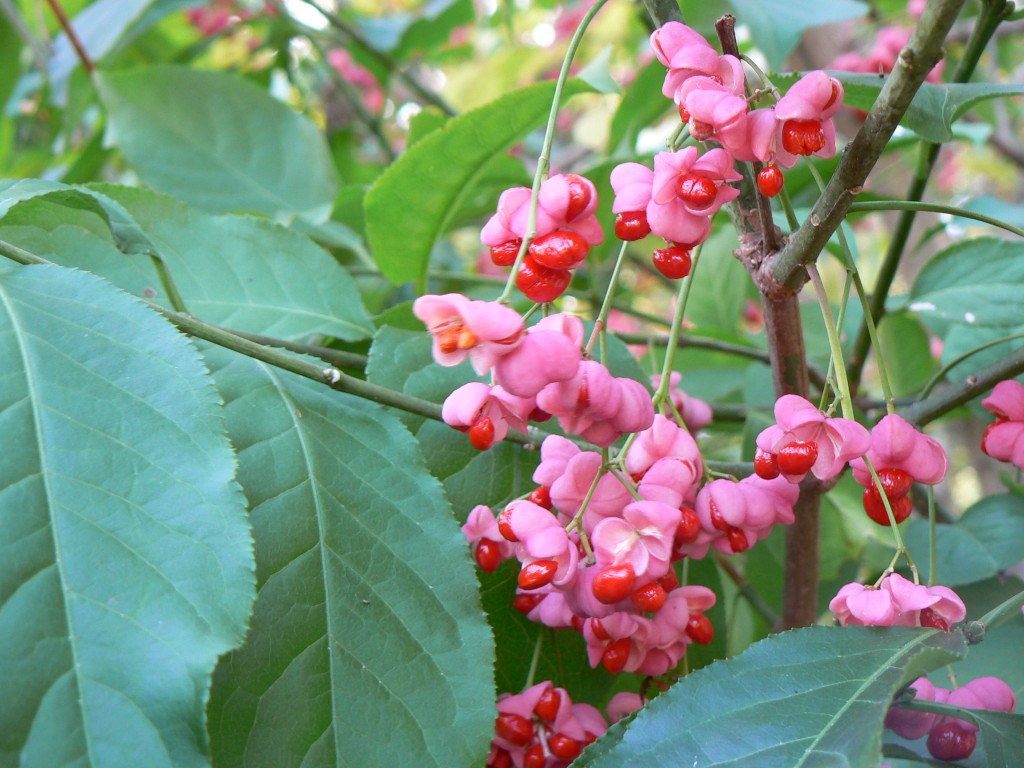
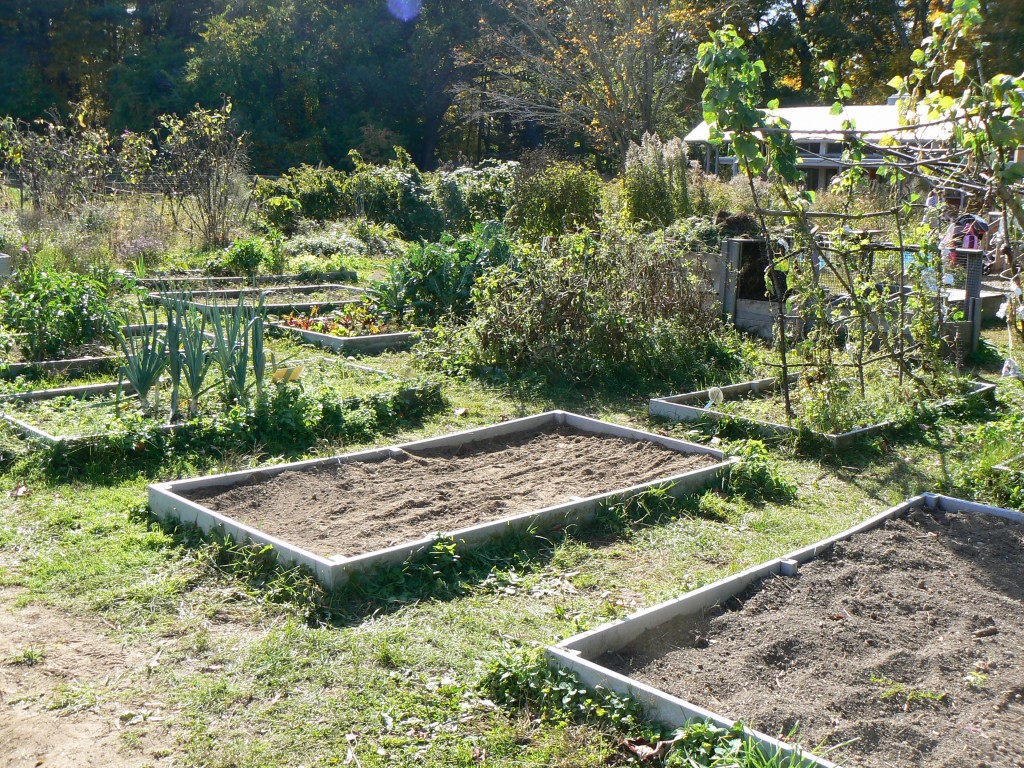
Improvements small and large are found across the farm. The Crossroads Barn got a new weather vane, while the Ice Pond Trail has new sensory features that bring nature experiences to visitors of all abilities.
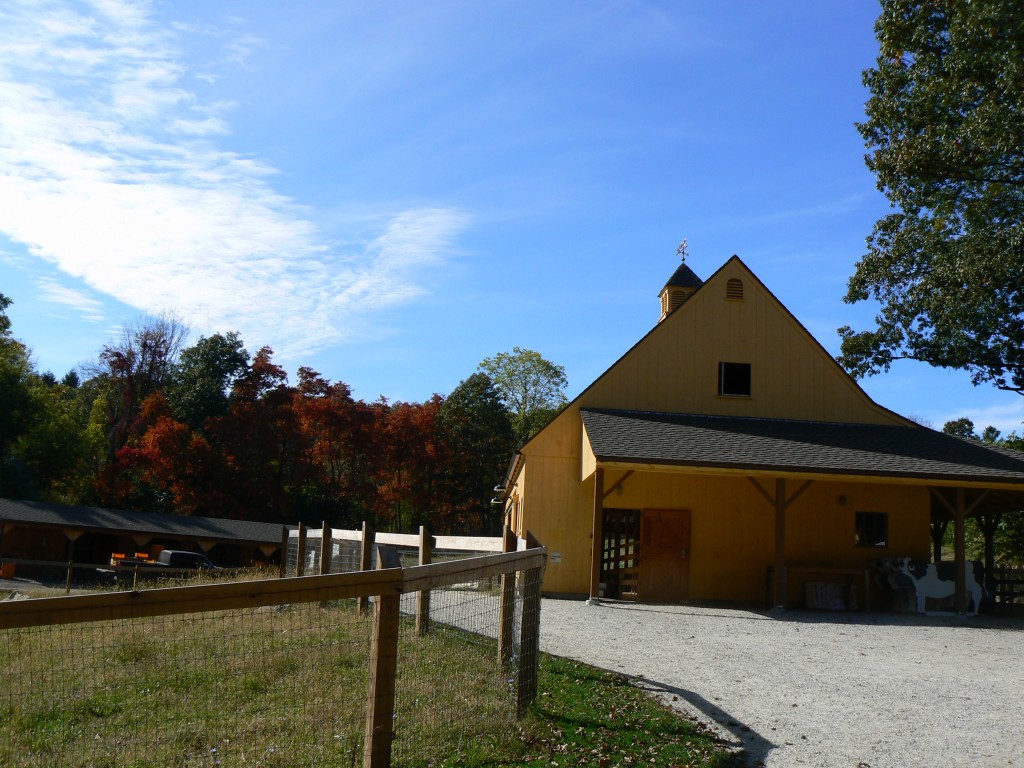

No matter the angle, everything looks like it belongs on a postcard.
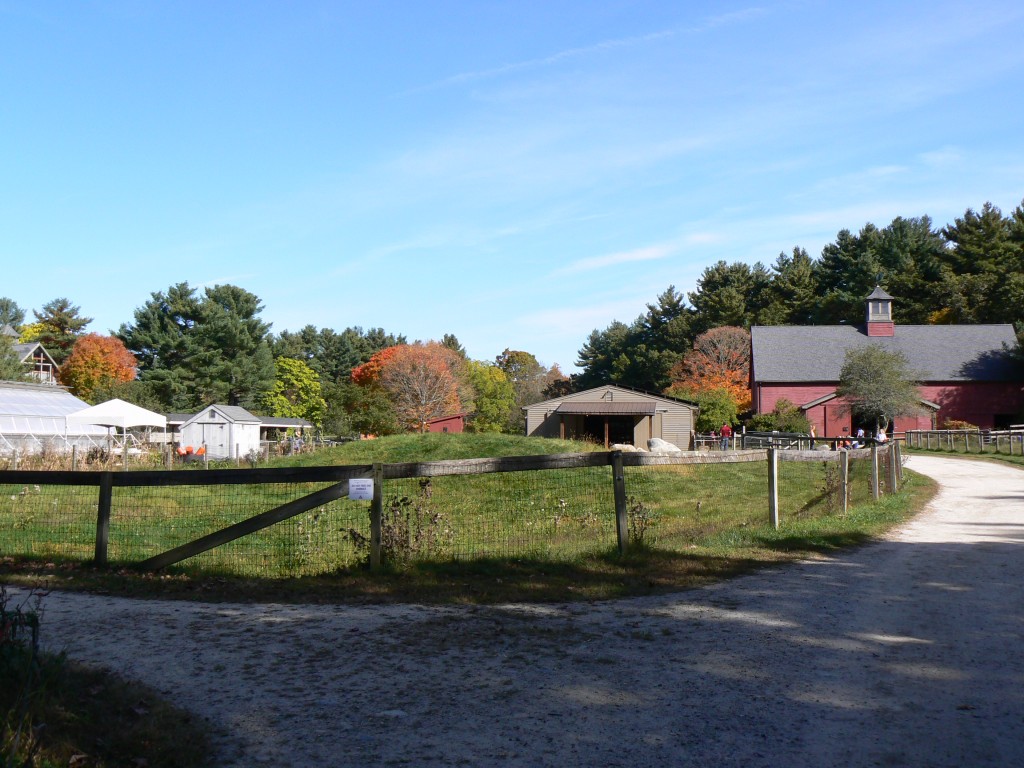


Over the Moon
From fabulous dishes prepared from Drumlin Farm’s own produce to the spirited bidding of our generous guests, the Moon Over Drumlin annual fundraising auction was a rousing success once again!
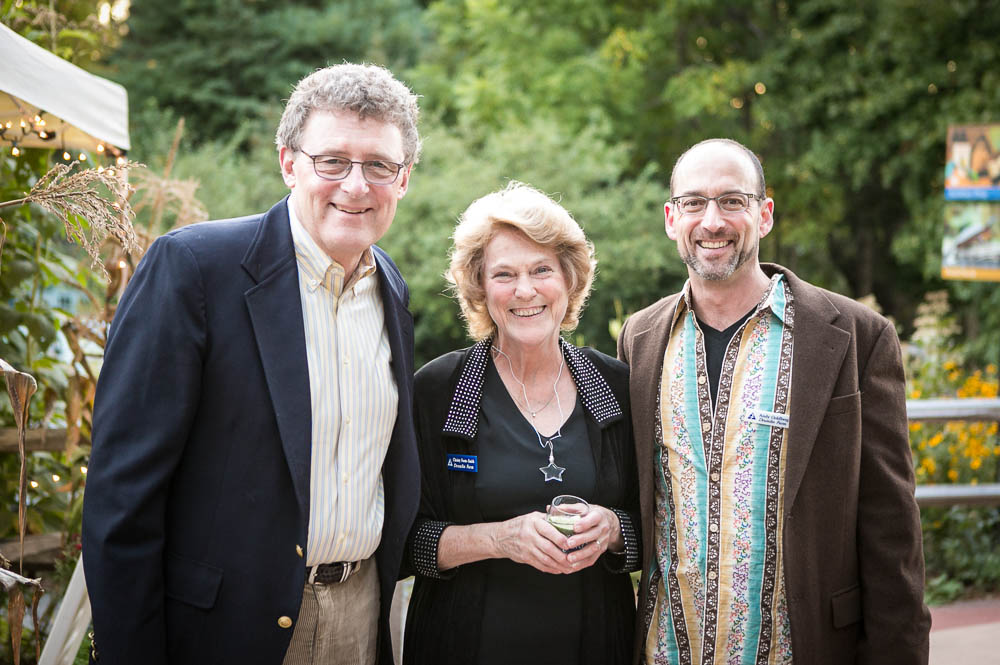 Sanctuary Director Christy Foote-Smith gave a wonderful overview of Drumlin Farm’s programs and the impact they have on children and families. Here she is pictured with her husband Bob Stupp and the chair of Drumlin Farm’s Sanctuary Committee, Andy Goldberg. The Sanctuary Committee provides tremendous support of all kinds to Drumlin Farm and we had a terrific turnout of members at the auction.
Sanctuary Director Christy Foote-Smith gave a wonderful overview of Drumlin Farm’s programs and the impact they have on children and families. Here she is pictured with her husband Bob Stupp and the chair of Drumlin Farm’s Sanctuary Committee, Andy Goldberg. The Sanctuary Committee provides tremendous support of all kinds to Drumlin Farm and we had a terrific turnout of members at the auction.
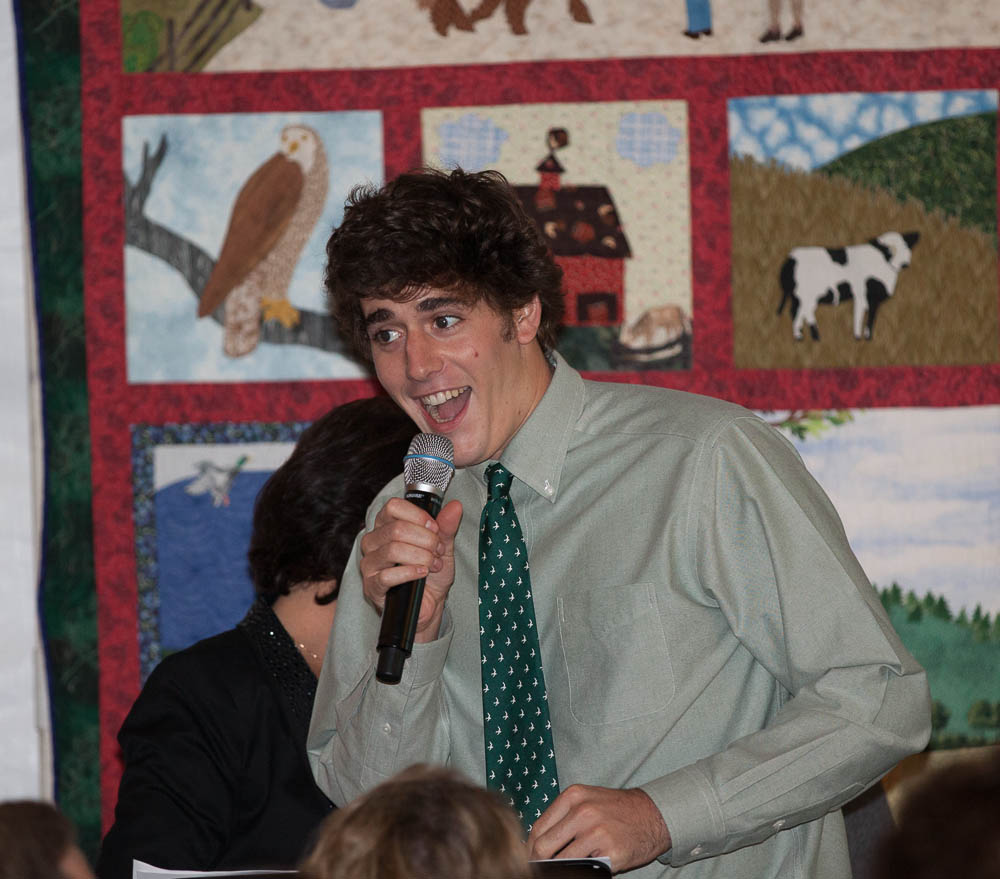 Camper turned counselor turned teacher-naturalist, Zach d’Arbeloff gave a first-hand account of how much Drumlin Farm can change lives. His humorous and heartfelt stories brought tears to our eyes.
Camper turned counselor turned teacher-naturalist, Zach d’Arbeloff gave a first-hand account of how much Drumlin Farm can change lives. His humorous and heartfelt stories brought tears to our eyes.
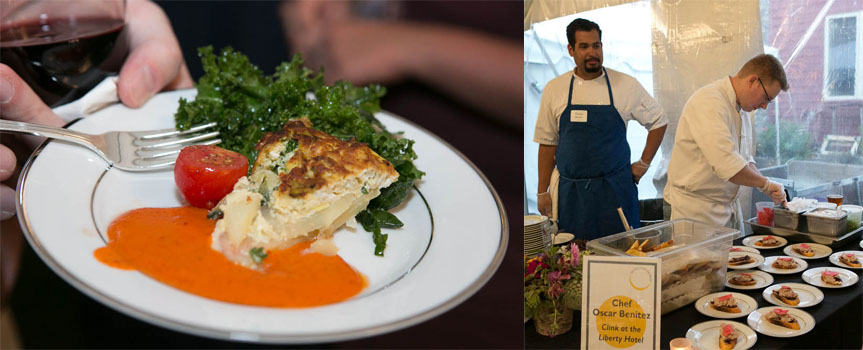 Chefs Oscar Benitez (Clink at the Liberty Hotel), Chris Chung (AKA Bistro), Carolyn Johnson (80 Thoreau), Peter McCarthy (Evoo), and Bob Sargent (Flora) provided a splendid array of food that tasted as good as it looks!
Chefs Oscar Benitez (Clink at the Liberty Hotel), Chris Chung (AKA Bistro), Carolyn Johnson (80 Thoreau), Peter McCarthy (Evoo), and Bob Sargent (Flora) provided a splendid array of food that tasted as good as it looks!
 Guests bid avidly on wonderful items, like getaway trips to Africa and Portugal, birding excursions with expert Chris Leahy and Mass Audubon President Henry Tepper, and Drumlin Farm items like overnight camping and special experiences with our beloved animals, Ms. G and Midnight. The high bid of the night came when we turned to this beautiful painting of a loon, created specifically for the auction by David Sibley, author of the Sibley Guides.
Guests bid avidly on wonderful items, like getaway trips to Africa and Portugal, birding excursions with expert Chris Leahy and Mass Audubon President Henry Tepper, and Drumlin Farm items like overnight camping and special experiences with our beloved animals, Ms. G and Midnight. The high bid of the night came when we turned to this beautiful painting of a loon, created specifically for the auction by David Sibley, author of the Sibley Guides.
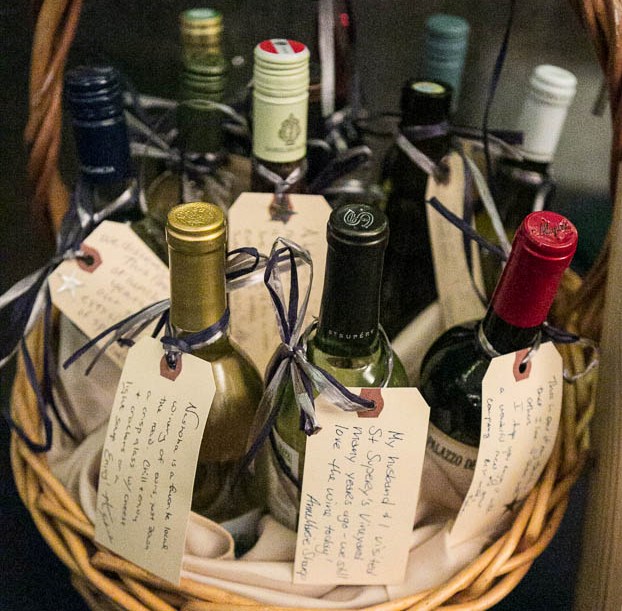 One lucky raffle winner received a wine basket with favorite bottles donated by our event committee members, plus one very special bottle from 1945!
One lucky raffle winner received a wine basket with favorite bottles donated by our event committee members, plus one very special bottle from 1945!
All in all, we are over the moon with how the whole evening went. We hope you’ll consider joining us next year for this annual fundraiser. We’d love to find you a place at our tables!
 All photo credits to Bonnie Baker Photography.
All photo credits to Bonnie Baker Photography.
Fledglings Emerge from Our Cavity Nests!
It has been another successful year for Drumlin Farm’s Cavity Nesting Program. Bird boxes placed around the sanctuary provide shelter and a good nesting spot. Volunteer monitors checked the boxes three times a week from April to late August, keeping track of the birds’ progress – from nest-building, to egg laying, chick feeding, and onto fledging when the young leave the boxes to join their parents in the world outside. The 38 bird boxes on the sanctuary, combined with the excellent habitat in our crop and hay fields, entice eastern bluebirds and tree swallows to nest here.
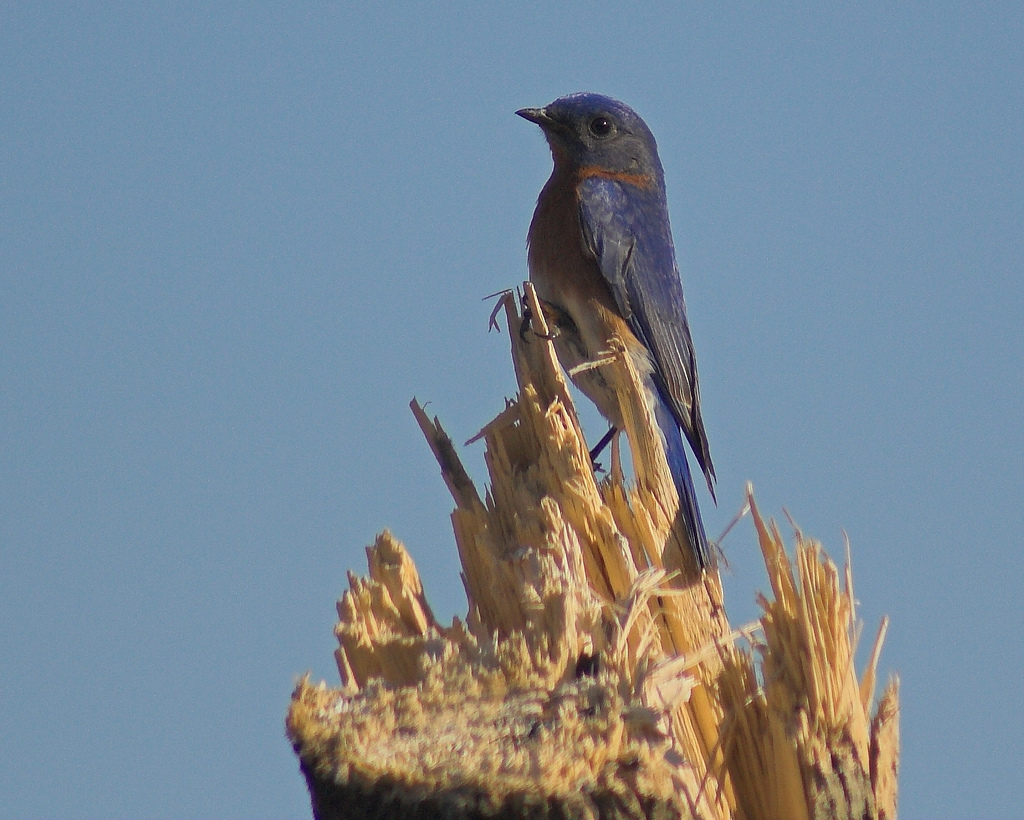
A rather cool spring made for a slow start but the number of chicks increased with some late broods. Our farmers are always happy to have the birds present in the fields where they gather potentially damaging insects off the vegetable plants to feed to their young.
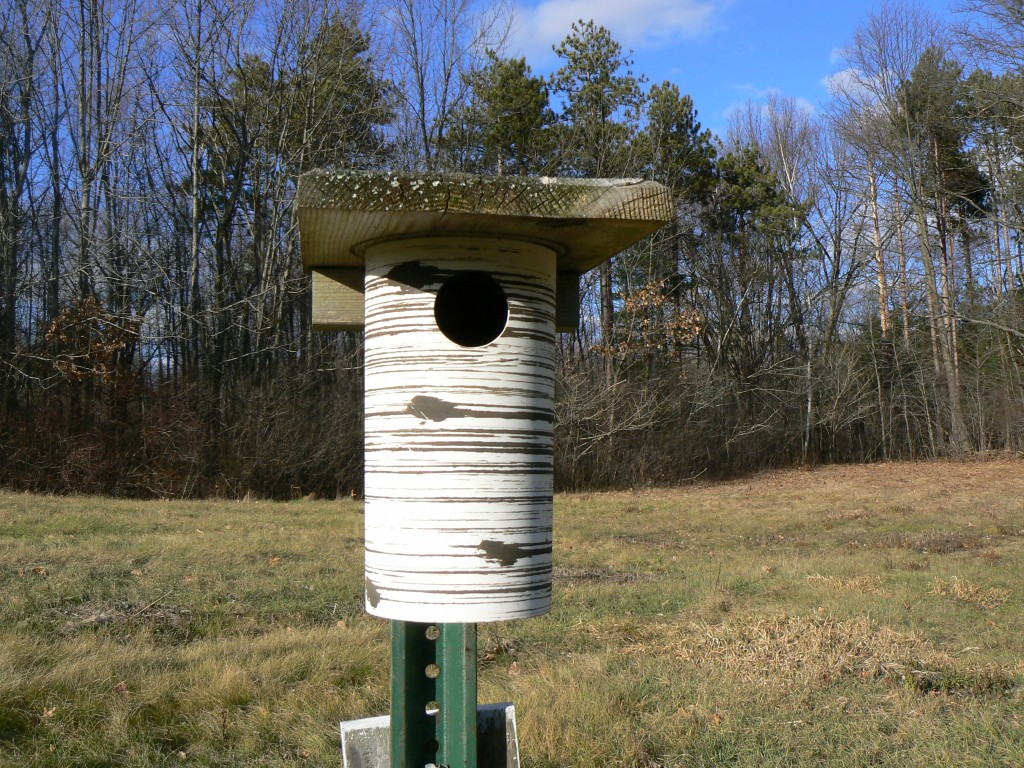
This year, 97 chicks fledged consisting of 71 bluebirds and 26 swallows. While this was a productive season it does not come close to our 2010 record of 115 chicks – a banner year. Looking back at the records, since 2007 a total of 587 chicks have begun their lives at Drumlin Farm. Isn’t that a pleasant thought?

Do you have a bird house in your yard? What types of birds do you see everyday?
Going Back to Basics
Nature provides unparalleled opportunities for learning and exploration, and Drumlin Farm educators have always recognized the value of outdoor education and play. At Drumlin Farm, people of all ages can experience nature and enjoy the physical, emotional, and intellectual benefits of being outdoors. Here are a few examples:
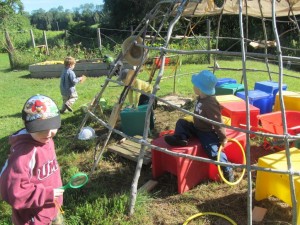 Drumlin Farm Community Preschool provides multi-sensory, inquiry-based exploration of the natural world that fosters curiosity and persistence in young learners.
Drumlin Farm Community Preschool provides multi-sensory, inquiry-based exploration of the natural world that fosters curiosity and persistence in young learners.

Family Programs create opportunities for parents and children to learn and connect to nature together. From milking the cows during Where’s the Milk? to exploring farm equipment in Trucks, Tractors, and Tools, Family Programs always encourage hands-on interactive learning.
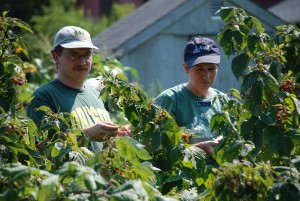
SAGE (Special Adults, Greener Earth) programs give adults with autism a chance to contribute to their communities in meaningful ways by helping take care of Drumlin Farm livestock and working in the Learning Garden.
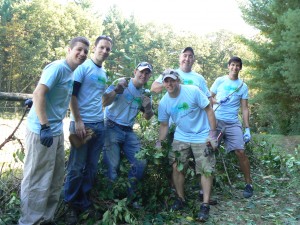
Volunteers of all ages participate in various ways, from teaching to farming. Here, recent volunteers from Biogen Idec helped to restore our Forest Discovery Trail. (Biogen Idec even sponsored the restoration!)
 To spread the word about the importance of connecting with nature, Mass Audubon is co-sponsoring the upcoming Discovery Museums Speaker Series event “Birthright: Children and Nature in the Modern World,” a presentation by Dr. Stephen Kellert. Dr. Kellert will talk about “biophilia”—the study of humans’ innate desire to explore and interact with nature—and provide insight into how to find time to be outdoors amidst increasing screen time.
To spread the word about the importance of connecting with nature, Mass Audubon is co-sponsoring the upcoming Discovery Museums Speaker Series event “Birthright: Children and Nature in the Modern World,” a presentation by Dr. Stephen Kellert. Dr. Kellert will talk about “biophilia”—the study of humans’ innate desire to explore and interact with nature—and provide insight into how to find time to be outdoors amidst increasing screen time.
Join us on October 3rd at Congregation Beth Elohim in Acton, MA to discover more about the link between human well-being and connecting with nature!
The event is free but space is limited, so register online soon to reserve your spot! We hope to see you there!
Between Summer and Fall
Drumlin Farm is a wonderful place to watch the seasons change, and right now we’re poised right at the edge of autumn; the last official day of summer is September 21st.
When you visit, take a look at our trees, and you may see a few colorful leaves popping up already. Here’s a red maple leaf on an appropriately named red maple tree near the Crossroads Barn.
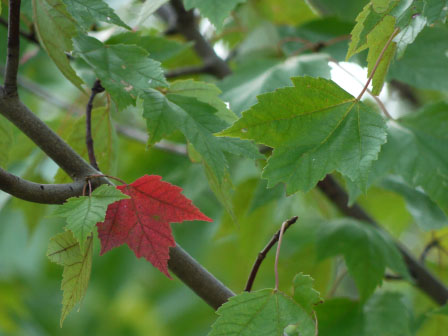
We’re also harvesting end-of-season favorites like squashes, with their beautiful autumn tones.

But don’t despair, summer fans: there’s still a lot of bright color in our flower fields!
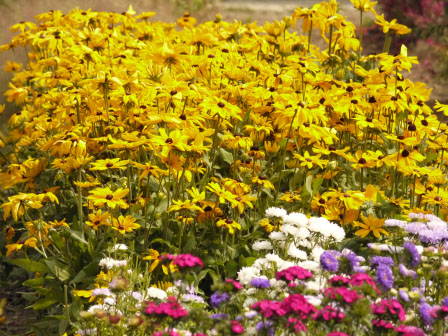
Also, our grazing animals have lots of lush greenery to enjoy.

And yes, there are still plenty of weeds to pull!.
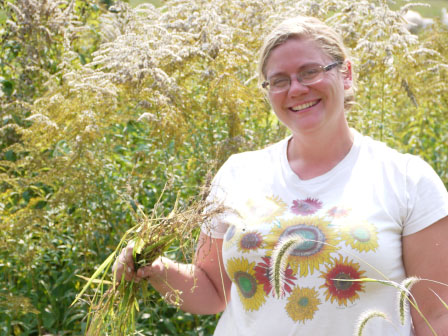
Are you eagerly looking forward to cool weather?
A Closer Look at Our Wildlife
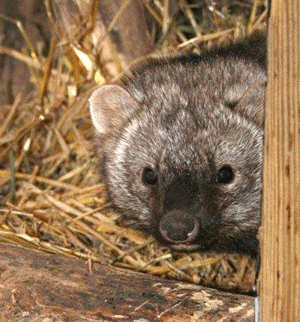 Drumlin Farm not only provides visitors with a variety of the most common farm animals such as sheep, goats, cows, chickens, and pigs. It is also home to many wild animals. On any given day, you may be greeted by a red-tailed hawk calling from the top of one of the pine trees along Route 117, a flock of wild turkeys resting around the bird feeders while a blue jay stealthily grabs a peanut, or a deer fawn hiding in the grass behind the vernal pool, waiting for her mother to come back.
Drumlin Farm not only provides visitors with a variety of the most common farm animals such as sheep, goats, cows, chickens, and pigs. It is also home to many wild animals. On any given day, you may be greeted by a red-tailed hawk calling from the top of one of the pine trees along Route 117, a flock of wild turkeys resting around the bird feeders while a blue jay stealthily grabs a peanut, or a deer fawn hiding in the grass behind the vernal pool, waiting for her mother to come back.
In addition to the wild animals that can be found here, Drumlin Farm is the permanent home to more than 30 species of native wild animals that are on display or used in our programs. These animals, which came to us from different rehabilitation centers, have either been injured or imprinted by humans and would not be able to survive in the wild on their own.
Bird Hill Trail
The most commonly represented group on Bird Hill is birds of prey (also known as raptors). This includes a pair of red-tailed hawks (female and male), both with wing amputations that make them unable to fly, several owls, and a turkey vulture.
But Bird Hill isn’t just for the birds! It is also home to our fisher (photo above). Despite the name, fisher (not fisher cat as is commonly said) rarely eat fish; they prefer small rodents, fruit, berries, and the occasional rabbit or porcupine. Our fisher was found as a kit on the side of the road, and brought to a wildlife rehabilitation center. When young animals are reared by humans, there is a risk they will become imprinted. Our fisher became too used human attention and lost the instinctive “fear” needed to survive in the wild.

Deer Pen Pond
If you walk past the Crossroads Barn toward Boyce Field, you might spot one of our three resident deer drinking at the deer pen pond. All of our deer were born in 2000 and came to us as rehabilitated imprinted orphans.
Mother deer in the wild have the habit of leaving their babies by themselves for large portions of the day. Fawns can rely on their camouflage to escape predators. However, humans who stumble upon fawns frequently think they have found an abandoned orphan and take them from their mothers. It is very hard to hand-raise a fawn and most of them become imprinted. Even if they don’t, the chance of reintegrating them into the wild population is minimal since they are missing the proper social cues to be accepted by wild deer.

Drumlin Underground
The two red foxes are the main attraction of Drumlin Underground. Even though both are members of the red fox species, our male is black/grey (or more formally, a silver red fox). Both animals came from a local rehabber in 2006 but the silver fox, at 9 years of age, is a little older than the red female.
The foxes are another example of imprinted animals. The red fox was hand-reared as a kit after being found covered in oil. The silver fox was kept illegally as a pet and brought to a veterinary clinic, emaciated and undernourished, before he was taken to a wildlife rehabber.
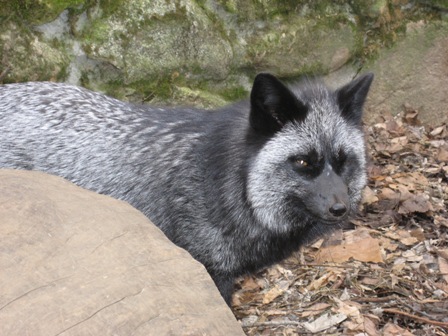
Wildlife Care
The native wildlife on display at Drumlin Farm is actually the minority of the wildlife that we care for. The animals living at Wildlife Care, which is not open to general visitors, are the educational animals that travel to schools, fairs, libraries, festivals, etc. with our teacher naturalists to be part of what we call ARK programs.
These educational animals are ambassadors of their species and help in teaching students of all ages about their species and the habitats they live in. Occasionally these animals are presented by teacher naturalists at Drumlin Farm during visitor education programs.
What is your favorite animal at Drumlin Farm, be it wild or one of our residents?
Guest post by Flavio Sutti, Wildlife Care Program Coordinator
Find us at the Farmer’s Market
Farm shares? Check! Farmstand? Check! Restaurant deliveries? Check! Farmer’s market? You bet!
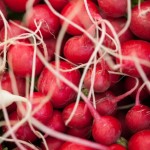
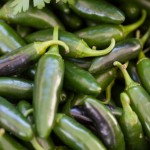


Every summer and fall, you can find a fresh selection of Drumlin Farm produce at the Union Square Farmer’s Market in Somerville. Calyb Hare, our Restaurant and Market Coordinator, offers a behind-the-scenes look at how it all goes down.
—
Each Friday our crops team works to harvest, wash, and pack a variety of vegetables, herbs, and sometimes melons or berries for market the following day. On Saturday morning the crops market crew leave their muddy farm boots in the barn and head to Somerville to showcase their hard work for the nearly 2,000 people that circulate through the market from 9 am to 1 pm.
It’s a bit of a hustle to get to our location, park, unload, and set up before the market bell rings, signifying it’s time to start selling. We unload approximately 4,000 pounds of produce, our three market tents and custom made tables, set up our displays, and take a moment to reflect on the bounty of our farm labor before the crowd moves in.
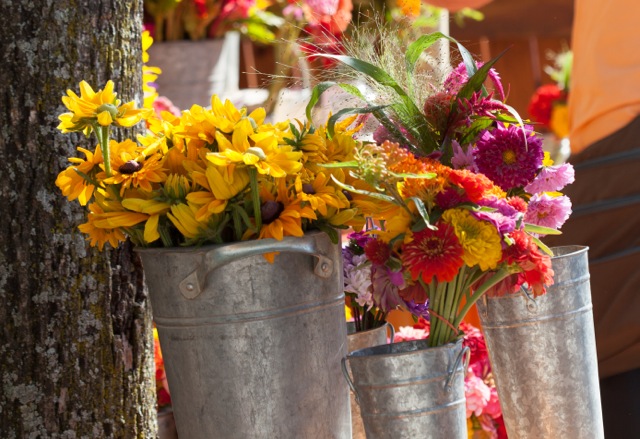
Union Square Main Streets Market manager, MaryCat, notes that, “Drumlin is a strong anchor on the plaza, and always adds to the overall feel of the market with beautiful displays and friendly staff.”
Drumlin Farm has been a vendor at this particular market for the last eight years and has developed not only regular clientele, but also a trademark look that has been crafted on the ideas of many apprentices and assistant managers over the years. We offer customers a unique experience where they enter into our tent and are offered a basket to assist with the toting aspect of making their weekly selections.

They wind through various tables adorned with baskets of summer squash, cabbage, and peppers; quarts of multicolored potatoes; rows of flawlessly bunched carrots, turnips, and beets; and beautifully packaged, biodegradable bags of cut greens. They are offered samples and recipe ideas of unique vegetables that they may be experiencing for the first time. They can make their own flower bouquets or have one custom made for them. Best of all, they get to know the members of the team that work each week to plant, cultivate, and harvest their weekend purchases.
Market day is not only a chance to be off the farm to enjoy the hustle and bustle offered by a city, it’s also a chance to reaffirm for ourselves that our work, our food really nourishes a community. This community depends on our efforts to sustain and nourish them throughout the week.
Photos courtesy of Sarah Jessop


